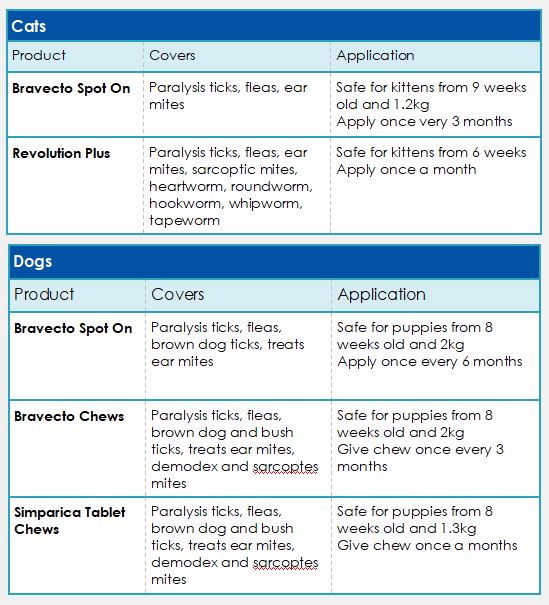The flea has become one of the most common reasons pet owners take their pets to a vet. But why are they such a problem? Some dogs and cats are highly allergic to fleas, while most are able to tolerate a high burden without excessive scratching. Those pets that are highly allergic to fleas (termed Flea Allergy Dermatitis) only need to be bitten once or twice before they start intensely itching. We commonly see hair loss at the base of the tail, along the tail, and the back of the thighs. These poor animals seem obsessed with scratching even though the fleas are sometimes hard to find.
Flea Allergic Dermatitis (FAD)
Fleas cause Flea Allergic Dermatitis (FAD), arguably the most common medical disease treated by vets. They can kill young puppies and kittens through blood loss and can be a major source of tapeworms.
Fleas have become almost ‘cockroach-like’ in their ability to breed and their resilience to many pesticides. The Sunshine Coast is known as one of the worst flea ‘hot-spots’ in Australia due to our ideal flea climate and high pet density.
So what can we do?
First we need to intimately get to know the flea’s life…..
The main points about this life cycle are:
- Only 1-2 fleas are required to cause FAD in highly allergic pets.
- Female fleas can produce 50 eggs per day! She does this by drinking 15 times her weight in blood daily, and can lay 2000 eggs in her life.
- Flea pupae can survive for 6 months on the ground and are practically impossible to destroy in their thick cocoon.
- Fleas start laying eggs within 24 –36 hours after finding your pet.
- Fleas can live up to 3 months as adults.
- Fleas have a 2 week life cycle in summer (adult > egg > larvae > pupae > adult).
- As winters on the Sunshine Coast are mild, fleas are a year round problem.
- Flea eggs and larvae are vulnerable to desiccation, frost and some sprays. They thrive in warm, humid and dark places.
So how do we control fleas?
By being consistent, and treating our pets all year around, even when we can’t see any. Our aim is to create a flea free environment—a flea “quarantine zone”.
To do this, we advise the following products.
These products are non toxic. No adult fleas = NO EGGS
I can still see fleas….Why?
- If less than 4-6 months into the treatment, some eggs will still be hatching.
- Are you using flea products on all your pets? All year round?
- Is your quarantine being broken? Is it possible that other dogs or cats have entered your property and dropped flea eggs in the environment.
- Are you using the products as directed?
- Your pet may have wandered into a flea ‘nest’ while on a walk.
Final note
It is possible to treat FAD and chronic flea infestations. To get results we need to adopt a long term approach that requires year round control using proven products.
Please contact us if you are not getting the results you expect. We will give you experienced advice on how to resolve the problem.




